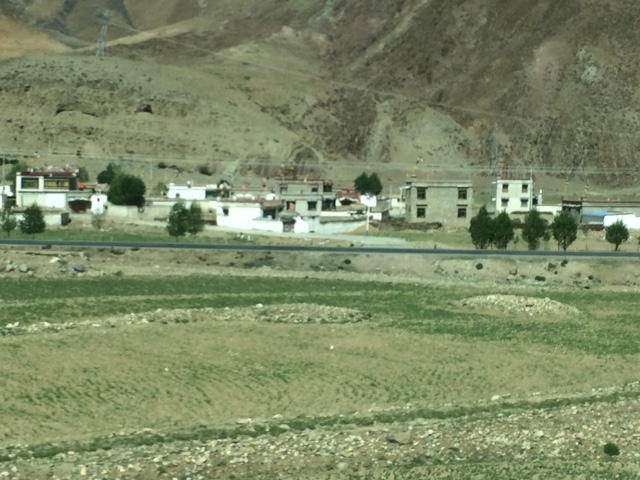Our flight was to depart at 11.50 hrs but on arrival at the airport, we were informed that our flight was cancelled!! We are to take a flight at 14.55 hrs !! The only consolation is that we will fly directly to Goungzhou and arrive as originally scheduled. We then hope to board the 00.05 hrs flight to Amsterdam.
My thoughts on Tibet:
1. The Tibetans are a very gentle people and friendly even though the majority don't speak English. They appear to be very religious and one sees them praying on their beads (similar to our rosary beads but the prayers, our guide explained, showing us her beads, are counted in 100s and then 1,000) as they walk the streets. Prayer wheels, which spin around, are also used but less frequently.
2. There is little doubt that the Chinese are trying to suppress their culture as the Chinese attempt to assimilate them. The railway line is a case in point - the Tibetans were not pleased with its arrival as it brought cheap mass produced goods and as a result their craft industries have suffered. As one Tibetan said to me ' we had mice but now the train brings rats' Was it allegorical ?
3. As you've previously read, the level of security is enormous. There were riots in Lhasa in 2012 and since then there are riot police visible in the streets together with the regular police and the army. The level of police inspections is greater than I've seen anywhere, even in Soviet era USSR.
4. The standard of hotels in Lhasa is very good and some of the restaurants are excellent but one must choose carefully where one eats. However, accommodation in Lake Namtso was very poor - either a tent shared dorm or a basic room. The toilet facilities were woeful with a pit style toilet in the middle of the complex - divisions between toilets but no doors!! No showering or washing facilities available in the complex and as its a holy lake , one can't swim there! On the train the toilets were never cleansed for the duration of the trip and one can imagine the level of deterioration as the train journey progressed. For the most part toilets here are disgusting, with no toilet paper available, (if, dear reader, you happen to pass this way, bring plenty of toilet paper, wet wipes, anti bacterial spray and tissues).
5. Their personal habits are strange to us - the Chinese spit a lot but not so the Tibetans. As we waited to gain entry to the Potala Palace, a Chinese woman beside me spat. Our guide, who is a very sophisticate lady, berated her. However, one could see from the lady's confused expression she couldn't see the problem. When we visited Beijing some years ago, the level of spitting was disgusting but I've noticed a marked improvement on our recent visits. Our guide told me she loves the European clients because they have manners and they do not litter. As I write this in the airport CAFE, there is s man across from me shaving himself and on the train a man, who joined our carriage, commenced cutting his nails!!
6. The cost of living for a tourist is reasonable, if not inexpensive.
7. The internet is severally restricted. One can send and receive emails, make 'What's App' phone calls, but one cannot get Google or any internet site to download information - even details of Chinese tourist sites.
Finally, in spite of the challenges aforementioned, we really enjoyed the trip. Tourism is in its infancy - the main tourists at present are young people travelling between Nepal and Tibet, trekking, visiting Kathmandu and base camp Everest.
If there's one regret, it is that we didn't visit Everest base camp. The facilities, I am reliably informed , rival Lake Namtso but still ...... the experience!!!
I would rate it among the top five holidays we've taken .... 😄
END
































































